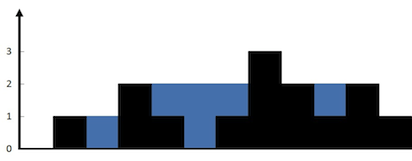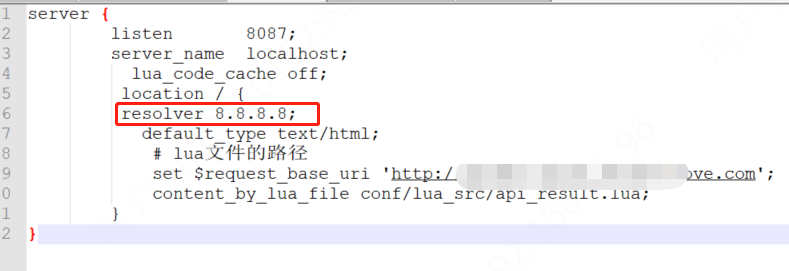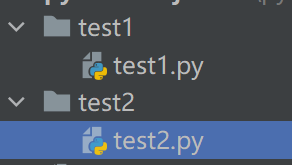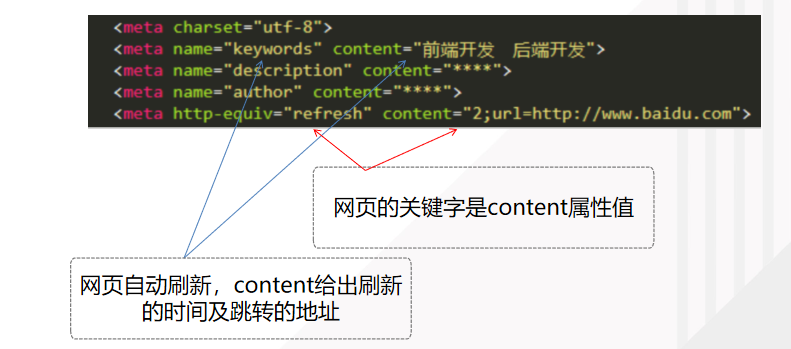LeetCode开心刷题二十二天——41. First Missing Positive42. Trapping Rain Water
- First Missing Positive
Hard
1825606FavoriteShare
Given an unsorted integer array, find the smallest missing positive integer.
Example 1:
Input: [1,2,0]Output: 3
Example 2:
Input: [3,4,-1,1]Output: 2
Example 3:
Input: [7,8,9,11,12]Output: 1
Note:
Your algorithm should run in O(n) time and uses constant extra space.
ATTENTION:
we need to find the relationship between subscripts and array value.
Correct order is the subscripts i corresponding i+1,which means arr[i]=i+1;
So if you find this value is not the correct corresponding just swap it to the right place.
if(arr[i]!=i+1&&arr[i]>=1&&arr[i]<=n&&arr[arr[i]-1]!=arr[i])This code is the most important one,but you need to pay attention that if arr[i]-1<0the arr will outrange so when we dealing with arrays we need to pay attention to itssubscripts#include<iostream>#include<string>#include<stdio.h>#include<string.h>#include<iomanip>#include<vector>#include<list>#include<queue>#include<algorithm>#include<stack>#include<map>using namespace std;//solve functionclass Solution{public:int firstMissingPositive(vector<int>& arr){int res,n=arr.size();for(int i=0;i<n;){if(arr[i]!=i+1&&arr[i]>=1&&arr[i]<=n&&arr[arr[i]-1]!=arr[i]){swap(arr[i],arr[arr[i]-1]);}else{i++;}}for(int i=0;i<n;i++){if(arr[i]!=i+1){res=i+1;return res;}}res=n+1;return res;}};int main(){Solution s;vector<int> arr={0,0,2};int res;res=s.firstMissingPositive(arr);cout<<res<<endl;return 0;}
The main progress is to use python,in face the thoughts are similar,so we need to operate skillfully
In fact,python has such difference with C,the main part is it needn’t main function
Now paste the solution below,including main function,and we use class so we need to let b=solution()
class Solution(object):def firstMissingPositive(self, nums):for i in range(0,len(nums)):while nums[i]>0 and nums[i]<=len(nums) and nums[i]!=i+1 and nums[nums[i]-1]!=nums[i]:nums[nums[i]-1], nums[i] = nums[i], nums[nums[i]-1]for i in range(0, len(nums)):if nums[i] != (i+1):return i+1return len(nums)+1nums=[3,4,-1,1]b=Solution()print(b.firstMissingPositive(nums))
- Trapping Rain Water
Hard
388672FavoriteShare
Given n non-negative integers representing an elevation map where the width of each bar is 1, compute how much water it is able to trap after raining.

The above elevation map is represented by array [0,1,0,2,1,0,1,3,2,1,2,1]. In this case, 6 units of rain water (blue section) are being trapped. Thanks Marcos for contributing this image!
Example:
Input: [0,1,0,2,1,0,1,3,2,1,2,1]Output: 6
Accepted
312,934
Submissions
714,173
IDEA ATTENTION:
The first consensus to be agree is not to waste time on a problem more than 15mins believe me darling,you need to have a clear perceive to you situation.which also as you known ,dilemma!!You are racing with time
Now you must totally clear that time only can be used to deeper the right way instead of thinking useless method you are not strong enough to pave the new road.
The first solution mainly solve by layer.But it cost too much time.Also my own method,but not recommend
#include<iostream>#include<string>#include<stdio.h>#include<string.h>#include<iomanip>#include<vector>#include<list>#include<queue>#include<algorithm>#include<stack>#include<map>using namespace std;class Solution {public:int trap(vector<int>& height) {int n=height.size(),res=0,cnt=1,global=0;if(n==0||n==1) return 0;int start=-1,ends=0,flag=0;while(1){cnt=0;start=-1,ends=-1;for(int i=1;i<n-1;i++){if(height[i]==0) flag=1;if(i+1>=n) break;if(height[i]==0&&(height[i+1]>height[i])&&(height[i-1]>height[i])){cnt++;}if(height[i]==0&&height[i+1]==0&&height[i-1]>0){start=i;}if(height[i]==0&&height[i-1]==0&&height[i+1]>0){ends=i;}if(start!=-1&&ends!=-1&&ends!=n-1&&(ends>start)){// cout<<"cntb"<<cnt<<endl;// cout<<ends<<"::"<<start<<endl;cnt+=(ends-start+1);// cout<<"cntA"<<cnt<<endl;start=-1,ends=-1;}global=i;}// cout<<"cnt"<<cnt<<endl;res+=cnt;for(int i=0;i<n;i++){if(height[i]>0)height[i]--;}int flag0=0;for(int i=0;i<n;i++){if(height[i]!=0)flag0=1;}if(flag0==0) break;}return res;}};int main(){Solution s;vector<int> arr={4,9,4,5,3,2};int res;res=s.trap(arr);cout<<res<<endl;return 0;}
This is the correct way use two pointer:
#include<iostream>#include<string>#include<stdio.h>#include<string.h>#include<iomanip>#include<vector>#include<list>#include<queue>#include<algorithm>#include<stack>#include<map>using namespace std;class Solution{public:int findWater(vector<int>& height){int n=height.size(),left_max=0,right_max=0;if(n==0||n==1) return 0;int res=0,left=0,right=n-1;//we need to find this situation one less value between two high valuewhile(left<right){//if left's height already less than right,it means we get min value between left and right//then we can directly use this to minusif(height[left]<height[right]){(left_max<height[left])?(left_max=height[left]):res+=left_max-height[left];left++;}else{(right_max<height[right])?(right_max=height[right]):res+=right_max-height[right];right--;}}return res;}};int main(){Solution s;vector<int> height={0,1,0,2,1,0,1,3,2,1,2,1};int res;res=s.findWater(height);cout<<res<<endl;return 0;}
Python Version:
Special Assignment:
just put variable inorder between = left and right
left,right=0,len(height)-1
In python we make class Instantiation like this:
solu = Solution()
Python Code:
class Solution(object):def trap(self, height):""":type height: List[int]:rtype: int"""if not height:return 0left_max=right_max=res=0left,right=0,len(height)-1while left<right:if height[left]<height[right]:if left_max>height[left]:res+=left_max-height[left]else:left_max=height[left]left+=1else:if right_max>height[right]:res+=right_max-height[right]else:right_max=height[right]right-=1return resif __name__ == '__main__':height=[0, 1, 0, 2, 1, 0, 1, 3, 2, 1, 2, 1]solu = Solution()print(solu.trap(height))
转载于 //www.cnblogs.com/Marigolci/p/11216840.html
//www.cnblogs.com/Marigolci/p/11216840.html



































还没有评论,来说两句吧...